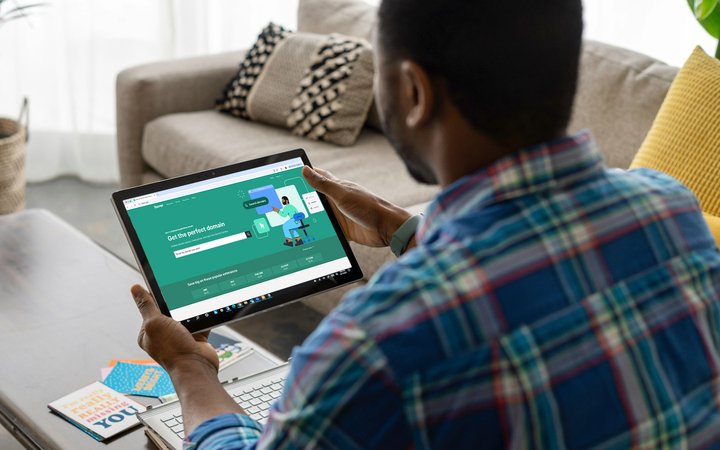Shopify Beginners: What to Expect When Buying a Domain Name

Starting your first Shopify store is exciting, but it can also feel overwhelming when you're faced with dozens of decisions right from the start. One of the first things you'll need to sort out is your domain name—the web address customers will use to find your store.
If you've never bought a domain before, the whole process might seem more complicated than it actually is. The good news? It's all pretty straightforward once you know what to expect.
In this guide, we'll walk you through everything you need to know about buying a domain for your Shopify store, from understanding the costs to making the right choice for your brand.
Do you actually need to buy a domain name?
When you sign up for Shopify, you automatically get a free domain that looks like this: yourstore.myshopify.com. This is called a subdomain, and it's perfectly functional for testing your store or getting started.
However, most businesses eventually move to a custom domain name for a few important reasons:
- Professional appearance:
yourbusiness.comlooks more credible thanyourbusiness.myshopify.com - Brand recognition: Customers are more likely to remember and trust a clean, simple web address
- Marketing advantages: Custom domains are easier to include in advertising and word-of-mouth recommendations
- SEO benefits: Search engines tend to favor custom domains over subdomains
That said, there's no rush. You can start with your free myshopify.com address and upgrade to a custom domain later when you're ready to invest in your brand.

How much does a Shopify domain cost?
This is probably the first question on your mind, and the answer depends on where you buy your domain and what type of domain you choose.
Buying directly through Shopify
Shopify makes it easy to buy domains directly through their platform. Here's what you can expect to pay:
- Initial cost: Between $11 and $16 per year for standard extensions like .com
- Renewal cost: Can increase to over $20 per year after the first year
- What's included: WHOIS privacy protection (more on this later) comes free
The main advantage of buying through Shopify is simplicity—everything is managed in one place, and the domain automatically connects to your store.
Buying from third-party registrars
You can also buy domains from other companies like GoDaddy, Namecheap, or OrangeWebsite, then connect them to your Shopify store. Here's how the pricing typically works:
- Initial cost: Can be as low as $0.99 for the first year (promotional pricing)
- Renewal cost: Usually jumps significantly after the first year, sometimes to $20+ annually
- Additional costs: Privacy protection often costs extra (around $10-15 per year)
While third-party registrars might offer cheaper first-year pricing, make sure you factor in the renewal costs and any extra fees before making your decision.
Premium domains
Some domain names are considered premium because they're short, memorable, or contain popular keywords. These can cost anywhere from hundreds to thousands of dollars, depending on demand.
As a beginner, you probably don't need to worry about premium domains. There are plenty of great options available at standard pricing.
Choosing the right domain extension

The domain extension is the part that comes after the dot—like .com, .co.uk, or .shop. Here's what you need to know about the most common options:
.com domains
This is the gold standard for most businesses. People automatically expect websites to end in .com, and it's the easiest for customers to remember. Unless you have a specific reason to choose something else, .com is usually your best bet.
Country-specific extensions
If you're primarily serving customers in a specific country, a local extension like .co.uk or .ca can actually help with local search rankings. However, they can also limit your international growth potential.
Newer extensions
Options like .store, .shop, or .online are becoming more popular, especially for ecommerce businesses. They're often cheaper than .com domains and can be more descriptive of what you do. The main downside is that they're less familiar to customers.
Our recommendation
For most Shopify stores, we'd recommend starting with a .com domain if your preferred name is available. If not, .co.uk (for UK businesses) or .shop are solid alternatives.
What about security and privacy?
When you register a domain, your personal information (name, address, phone number, email) becomes part of a public database called WHOIS. This means anyone can look up who owns your domain.
WHOIS privacy protection
Most registrars offer WHOIS privacy protection, which hides your personal details and replaces them with generic contact information. This helps protect you from spam and keeps your personal information private.
If you buy your domain through Shopify, this protection is included for free. With other registrars, it typically costs an extra $10–15 per year, but it's usually worth the investment.
SSL certificates
Don't worry about this one—Shopify automatically provides free SSL certificates for all domains connected to your store. This is what makes your website show https:// and displays the padlock icon in browsers, letting customers know their connection is secure.
Tip
Are premium SSL certificates better than Shopify’s in-built options? Learn more about the benefits of using Shopify’s free Let’s Encrypt SSL/TLS certificates for your store in our new article!
Tips for choosing the perfect domain name

Now for the fun part—actually picking your domain name. Here are some guidelines that will serve you well:
Keep it short and simple
Aim for something that's easy to type, spell, and remember. If people struggle to spell your domain name, they won't be able to find your store.
Make it brandable
Your domain name doesn't have to describe exactly what you sell, but it should work well as a brand name. Think about companies like Amazon or Apple; their domain names don't describe their products, but they're memorable and distinctive.
Avoid hyphens and numbers
These make domains harder to communicate verbally and more prone to typos. If someone tells a friend about your store, you want them to be able to find it easily.
Check for trademarks
Before settling on a name, do a quick search to make sure you're not infringing on someone else's trademark. This could cause legal issues down the road.
Test it out loud
Say your potential domain name out loud and see how it sounds. Ask friends and family what they think. If it's confusing or awkward to say, it might not be the right choice.
Common mistakes to avoid

Learning from other people's mistakes can save you time and money. Here are the most common domain-buying mistakes we see:
Focusing only on first-year pricing
Those $0.99 first-year deals can be tempting, but if the renewal cost jumps to $30 per year, you might end up paying more in the long run than if you'd chosen a provider with consistent pricing.
Buying multiple variations “just in case”
Some beginners think they need to buy .com, .co.uk, .net, and other variations of their domain name. Unless you're a large company with a significant budget, this usually isn't necessary. Focus on getting one great domain rather than several mediocre ones.
Choosing a name that's too specific
If you start with “bestbluejeans.com” but later want to sell other clothing items, your domain name might feel limiting. Think about where your business might grow.
Not checking social media availability
While not essential, it's helpful if your domain name matches your social media handles. Do a quick check on Instagram, Facebook, and other platforms you plan to use.
Making the final decision
At this point, you should have a good understanding of what's involved in buying a domain for your Shopify store. Here's our step-by-step recommendation for most beginners:
- Start with the free myshopify.com domain while you're setting up your store and testing everything
- Brainstorm 10-15 potential domain names that fit your brand and business goals
- Check availability using Shopify's domain search tool or your preferred registrar
- Compare total costs (including renewal fees) between Shopify and third-party options
- Purchase your domain once you're ready to launch publicly
- Set up proper forwarding so both www.yourdomain.com and yourdomain.com work correctly
Remember, your domain name is important, but it's not make-or-break for your business. Focus on choosing something you're happy with, then put your energy into creating great products and providing excellent customer service.
What happens next?
Once you've secured your domain and connected it to your Shopify store, you'll want to make sure everything else is set up properly for your business. This includes getting your invoicing sorted—something many new store owners overlook until their first sale comes through.
Having professional, compliant Shopify invoices ready from day one helps establish trust with customers and keeps you organized as your business grows. It's just one more piece of the puzzle that helps your store look and feel professional from the start.
The domain name you choose today will hopefully grow with your business for years to come. Take your time, do your research, and remember that you can always change it later if needed, though it's obviously better to get it right the first time.
Professional invoices for Shopify stores
Let Sufio automatically create and send beautiful invoices for every order in your store.
Install Sufio - Automatic Invoices from the Shopify App Store